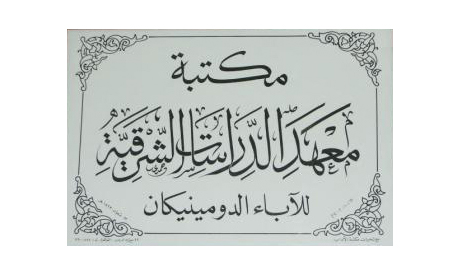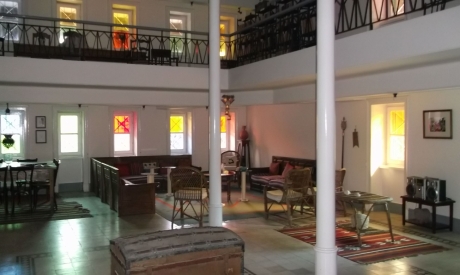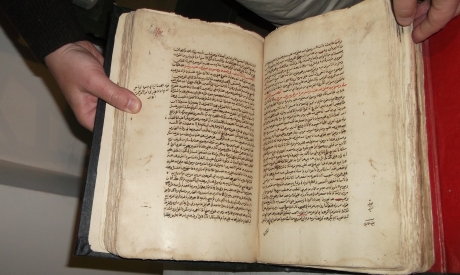
Photo: IDEO-Cairo website
The Dominican Institute of Oriental Studies is a unique resource for references and periodicals on Islamic civilisation during the first ten centuries of Islam. Founded in 1928 Antonin Jaussen (1871-1962), the Dominican had evolved into a study centre for the archaeology of Egypt before its activities were discontinued during first World War. Soon after the war, the Vatican called for altering the focus of the institute to Islam, “to make it better known and appreciated in its religious and spiritual dimensions”.

Old Dominican Library turned to reading area
In the early 1950s, frère Georges Anawati started the new Dominican Institute of Oriental Studies and established the library. In 1997, frère René came to Egypt and started the project of renewing the old library, opening its doors to external researchers and students as of 2002. The new building now houses over 150,000 books and periodicals, open to researchers four days a week (including Friday), and with a comprehensive catalogue of both books and periodicals, including the individual articles of each periodical.
“What is unique about this library is the collection itself, not only specific books. We are keen to bring to Egypt all the writings related to Islamic civilisation from all over the world and in different languages. As much as we encourage foreigners to learn about Islam, we encourage Arab students to find out what’s written about it in foreign languages: French, English, German and others,” frère René, the director of the library, explained to Ahram Online.
The policy of the institute is to find out about and make available everything from the original resources and books – including philosophy and jurisprudence – and then undertake interpretation. “We don’t have many manuscripts, some 25 Arabic and 25 Coptic ones, the oldest of which belong to the 17th century. But we have many printed books from the 16th century since printing was invented in Europe at that time.” Frère René says the library isn’t really intended to become a collection of manuscripts but rather a resource for serious research on the history of Islam, Arabic heritage, language, Quranic studies and other fields of within the genre. “I try to look for books from the 19th century sold in the market in bad condition, such as Boulaq collections and such. We try to spread knowledge, not horde it.”

Oldest manuscript
Students come from all over Egypt and beyond to complete their studies on Islamic civilisation, including students from Al-Azhar, Cairo University and others. Attached to the library is a unique guest house open for long-term students to reside next to the library with independent sleeping areas. The recent fire at the Egyptian Scientific Institute brought to attention safety and fire protection measures, and this was how the Dominican library is protected, as frère René explains: “The entire library storage is kept one level below the reading hall. In order to reduce fire hazards, the entire floor is supplied with around 14V power instead of the usual 240V running in all Egyptian wiring. This is enough for the lights we use downstairs.” The strategy reduces the risk of electric fire significantly: “As for the main fire protection plan, of course we cannot afford to use water since it’s as risky to books as fire. We use carbon dioxide gas tubes, running all through the ceiling in every aisle. As soon as fire is detected, the gas is released, pushing out oxygen and therefore putting off the fire without any risk to the books.”

Fire protection system, lighting and ventillation
This system is apparently used in various establishments of Egypt, not only libraries but also technology centres with high-voltage wiring where water cannot be used. The carbon dioxide tubes are stored in an adjoining room. “They are checked once a year, and the last time was few months back,” he explained.
In addition to this complex system, there is a traditional fire alarm and water system in the top floors where the reading and conference halls are. “There are no books here,” frère Rene points out, explaining that one shelf carries recent periodicals “only for display”, so that researchers have the chance to look at recent material that hasn’t been included in the index yet. In addition, an alarm system against theft and intrusion is applied to all doors and one especially for the book storage floor.
“We hope that this library will serve its role among researchers and students. Before 2002, the small building that housed the library wasn’t suitable for receiving guests, and that’s why this new building was established. It isn’t fair to keep the treasure of 150,000 books only to Dominicans,” he concludes.
Short link: